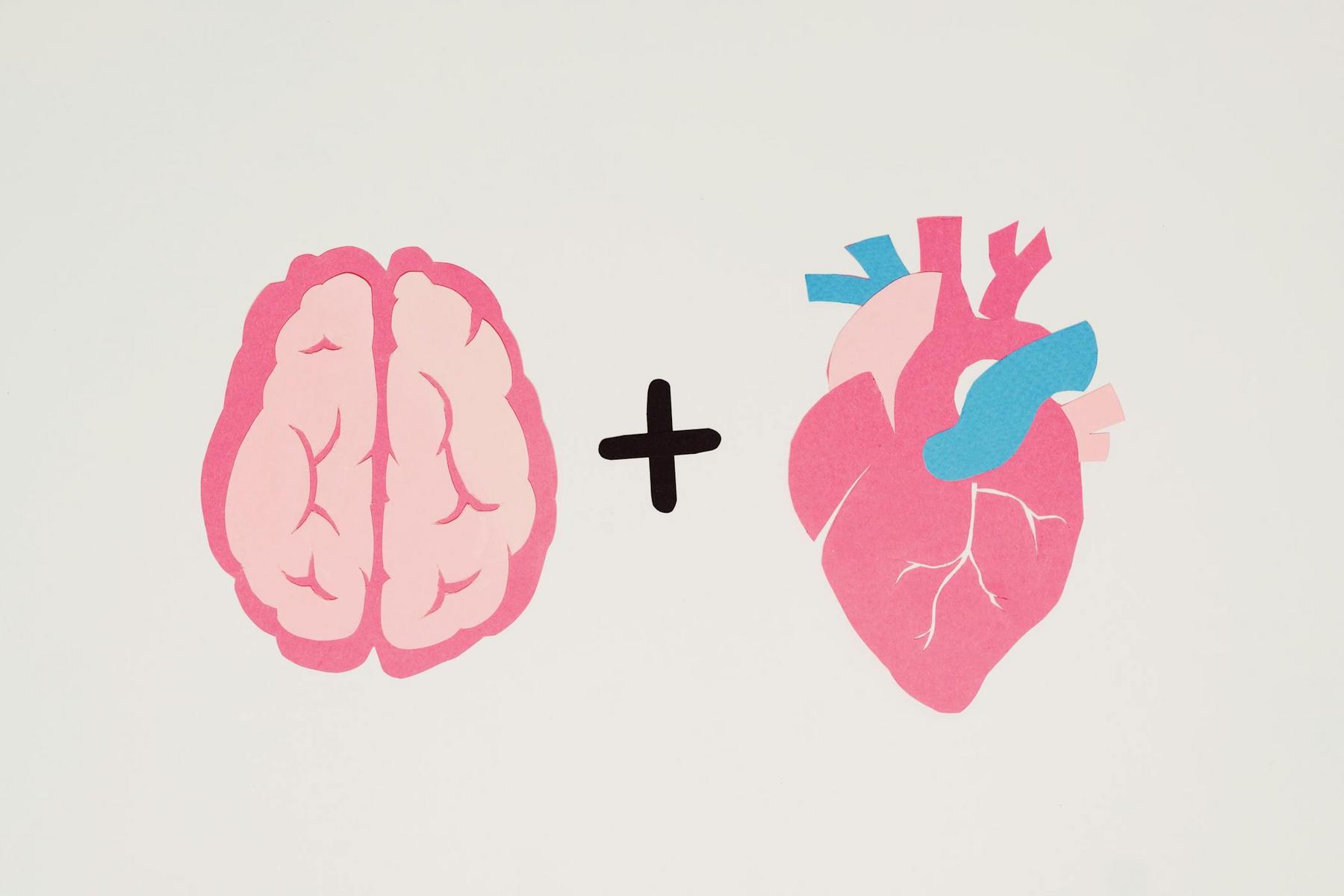Have you ever wondered why you feel more refreshed after some nights than others, despite sleeping the same number of hours? The answer lies in sleep architecture—the intricate blueprint that governs how your brain orchestrates rest and recovery. In Australia, where 33-45% of adults experience sleep disorders, understanding the structural foundations of healthy sleep has never been more critical. Sleep architecture represents far more than simple unconsciousness; it’s a sophisticated biological symphony involving precisely timed stages, each serving distinct physiological functions that determine whether you wake feeling restored or depleted.
What Exactly Is Sleep Architecture and Why Does It Matter?
Sleep architecture refers to the basic structural organisation of normal sleep, representing one of the most fascinating biological processes governing human health and wellbeing. This intricate system encompasses the cyclical progression through distinct sleep stages, each characterised by unique neurobiological markers and physiological functions that have evolved over millions of years to optimise human survival and performance.
The fundamental framework of sleep architecture operates through two primary categories: non-rapid eye movement (NREM) sleep and rapid eye movement (REM) sleep. NREM sleep constitutes approximately 75-80% of total sleep time and is divided into three progressive stages of increasing depth, while REM sleep accounts for the remaining 20-25%. This distribution is not arbitrary—each component serves specific biological functions that contribute to physical restoration, memory consolidation, emotional processing, and cognitive performance.
The architectural structure reveals itself through electroencephalographic (EEG) research, which traces electrical patterns of brain activity throughout the night. This scientific breakthrough demonstrated that sleep is not a uniform state of unconsciousness but rather a dynamic process involving systematic transitions between different neurobiological states. Stage 1 NREM sleep serves as the transitional phase from wakefulness, typically lasting 1-7 minutes and constituting 2-5% of total sleep time. During this lightest stage, brain activity transitions from rhythmic alpha waves of relaxed wakefulness to low-voltage, mixed-frequency waves.
Stage 2 NREM sleep represents deeper rest, lasting approximately 10-25 minutes initially and progressively lengthening with each successive cycle until it constitutes 45-55% of the total sleep episode. This stage features distinctive EEG patterns including sleep spindles and K-complexes, which research suggests play crucial roles in memory consolidation and protecting sleep from external disturbances.
The deepest stage, Stage 3 NREM sleep, is characterised by delta waves comprising at least 20% of brain activity. Also known as slow-wave sleep, this stage typically lasts 20-40 minutes during early cycles but decreases in duration as the night progresses. During this phase, breathing becomes more regular, blood pressure falls, and the pulse slows to 20-30% below waking rates whilst the brain becomes less responsive to external stimuli.
REM sleep represents the fourth stage, characterised by rapid eye movements, vivid dreaming, and unique physiological patterns. Brain activity resembles wakefulness, yet the body experiences temporary muscle paralysis preventing physical dream enactment. The first REM period is typically short at 10 minutes, progressively increasing throughout the night with the longest periods occurring in the final third of sleep.
| Sleep Stage | Duration (Initial Cycle) | % of Total Sleep | Key Characteristics | Primary Functions |
|---|---|---|---|---|
| Stage 1 NREM | 1-7 minutes | 2-5% | Light sleep, easily awakened | Transition from wake to sleep |
| Stage 2 NREM | 10-25 minutes | 45-55% | Sleep spindles, K-complexes | Memory consolidation, sleep protection |
| Stage 3 NREM | 20-40 minutes | 15-25% | Delta waves, deep sleep | Physical restoration, immune function |
| REM Sleep | 10 minutes | 20-25% | Rapid eye movements, dreams | Emotional processing, memory integration |
How Do Neurobiological Systems Control Sleep Pattern Structure?
The neurobiological underpinnings of sleep architecture involve complex networks of neurotransmitters, brain regions, and molecular mechanisms that orchestrate transitions between wakefulness and different sleep stages. The hypothalamus plays a central role in regulating sleep duration, with specific groups of neurons producing gamma-aminobutyric acid (GABA) serving as the primary sleep-promoting neurotransmitter system.
These GABAergic neurons, located in the basal forebrain and anterior hypothalamus, exhibit unique firing patterns that increase during sleep onset and maintain high activity levels throughout NREM sleep. The sleep-promoting effects occur through inhibition of multiple arousal-promoting systems throughout the brain, targeting neurons containing histamine, norepinephrine, serotonin, and glutamate, effectively silencing arousal systems that maintain wakefulness.
Histaminergic cells in the posterior hypothalamus play particularly crucial roles in maintaining wakefulness, as evidenced by their direct inhibition by GABAergic sleep-active cells representing a fundamental mechanism underlying the transition from wakefulness to sleep.
Adenosine represents another crucial component, functioning as an endogenous sleep-promoting factor that accumulates during prolonged wakefulness. Extracellular adenosine concentrations gradually increase in the cerebral cortex and basal forebrain during sustained arousal, reaching threshold levels that promote drowsiness and sleep initiation. During recovery sleep, adenosine levels slowly decrease, contributing to alertness restoration and maintenance of normal sleep-wake cycles.
Different neurotransmitter systems exhibit distinct activity patterns across sleep stages, contributing to each phase’s unique characteristics. During REM sleep, acetylcholine activity increases significantly, contributing to heightened brain activity and vivid dreaming. The cholinergic system, originating from the brainstem and basal forebrain, plays crucial roles in REM sleep generation and maintenance.
Serotonin and norepinephrine systems exhibit decreased activity during REM sleep, contributing to muscle atonia that prevents physical movement during dreams. This selective inhibition of monoaminergic systems during REM sleep represents a fundamental safety mechanism ensuring sleeping individual protection whilst allowing cognitive and emotional processing during dreaming.
What Role Do Circadian Rhythms Play in Sleep Architecture?
Sleep architecture is fundamentally governed by the interaction between two primary regulatory processes: the circadian timing system and sleep homeostasis. The circadian system operates as an internal biological clock with an approximately 24-hour period, synchronised to environmental light-dark cycles through specialised pathways connecting the retina to the suprachiasmatic nucleus (SCN) of the hypothalamus.
The suprachiasmatic nucleus functions as the central circadian clock through complex molecular mechanisms involving clock genes and their protein products. During daylight hours, light signals transmitted through the retinohypothalamic pathway activate the SCN, which sends inhibitory signals through the paraventricular nucleus to suppress pineal-derived sleep-promoting signals. As darkness approaches, absent light signals allow the SCN to activate sympathetic nervous system pathways that stimulate the synthesis and release of darkness-driven hormonal signals from the pineal gland, promoting sleepiness and facilitating sleep onset.
These darkness-driven hormonal signals serve as crucial chemical messengers conveying darkness information to the brain and peripheral organs, helping synchronise circadian rhythms with the external environment. The circadian rhythm of pineal secretion is directly controlled by the SCN and reflects underlying mechanisms involved in sleep-wake cycle regulation. Research demonstrates that these pineal-derived sleep-promoting signals can influence sleep-promoting and sleep-wake rhythm-regulating actions through specific activation of receptors highly concentrated in the SCN.
The homeostatic sleep drive represents the second fundamental component, operating as internal pressure that builds during wakefulness and dissipates during sleep. This process is largely mediated by adenosine accumulation and other sleep-promoting substances during sustained arousal periods. The homeostatic drive increases progressively with prior wakefulness duration and decreases during sleep recovery, creating biological imperatives for regular sleep.
In healthy individuals, circadian and homeostatic processes work synergistically to promote consolidated nighttime sleep and sustained daytime wakefulness. The circadian drive for sleep is strongest near the habitual sleep episode’s end, consolidating sleep as homeostatic drive decreases. Conversely, circadian wakefulness drive is strongest a few hours before habitual wake time during the “wake maintenance zone,” consolidating wakefulness as sleep homeostatic drive builds throughout approximately 16-hour wake periods.
How Does Sleep Architecture Change Throughout Life?
Sleep architecture undergoes significant changes throughout the human lifespan, reflecting the dynamic nature of sleep regulation and its adaptation to changing physiological and developmental needs. These age-related modifications involve alterations in sleep stage distribution, sleep efficiency, circadian timing preferences, and overall sleep quality, providing crucial insights into normal sleep physiology.
During infancy and early childhood, sleep architecture differs markedly from adult patterns. Newborns and infants spend significantly more time in REM sleep, which can account for up to 50% of total sleep time compared to 20-25% observed in healthy adults. This increased REM sleep proportion supports rapid brain development, neural plasticity, and learning processes crucial during early life. Additionally, infants may enter REM sleep directly without progressing through NREM stages, a pattern that normally occurs only in specific neurological conditions in adults.
Sleep architecture maturation continues throughout childhood and adolescence, with gradual changes in sleep stage distribution and circadian timing preferences. Adolescents typically experience natural circadian phase delays, leading to later bedtimes and wake times when free from external scheduling constraints. This biological tendency toward later sleep timing often conflicts with early school start times, contributing to chronic sleep deprivation among teenagers.
Adult sleep architecture exhibits considerable individual variation whilst maintaining consistent overall patterns. Most healthy adults experience 4-5 complete sleep cycles per night, with each cycle lasting 90-110 minutes. However, individual differences in cycle length, sleep stage distribution, and total sleep requirements vary significantly based on genetic factors, lifestyle influences, and health status.
Research conducted in Australia reveals important insights into adult sleep patterns. The average reported sleep time among Australian adults is 7 hours, though 12% sleep less than 5.5 hours and 8% sleep more than 9 hours nightly. Significantly, 76% of those sleeping less than 5.5 hours report frequent daytime impairment or sleep-related symptoms, indicating that shortened sleep duration often results in inadequate recovery and restoration.
The aging process brings characteristic changes affecting both sleep quality and daytime alertness. Older adults typically experience decreased deep sleep (Stage 3 NREM), increased sleep fragmentation, earlier bedtimes and wake times, and reduced sleep efficiency. These changes associate with alterations in circadian rhythm amplitude and timing, decreased production of pineal-derived sleep-promoting signals, and increased sensitivity to environmental disturbances.
The reduction in deep sleep with aging has important implications for physical restoration and memory consolidation processes. Stage 3 NREM sleep is crucial for growth hormone release, immune system function, and cellular repair mechanisms. Age-related declines in deep sleep may contribute to decreased physical recovery, increased illness susceptibility, and cognitive changes observed in older adults.
What Clinical Implications Does Sleep Architecture Have?
The clinical significance of sleep architecture extends far beyond the bedroom, influencing virtually every aspect of human health and performance. Sleep disorders and disrupted sleep architecture have been associated with increased risks of cardiovascular disease, diabetes, obesity, depression, anxiety, and cognitive impairment, making sleep architecture understanding fundamental to comprehensive healthcare approaches.
Sleep architecture analysis through polysomnography has become a cornerstone of sleep medicine, allowing clinicians to identify specific disruptions in sleep stage progression and timing. The measurement of brain electrical activity using electroencephalography (EEG) provides detailed information about sleep stage transitions, sleep efficiency, and presence of abnormal sleep phenomena. Additional monitoring of eye movements, muscle tone, breathing patterns, and physiological parameters enables comprehensive sleep architecture assessment.
The prevalence of sleep disorders in Australia highlights significant public health impacts of disrupted sleep architecture. Diagnosed sleep apnoea affects 8% of Australian adults, whilst 20% experience significant insomnia and 18% report restless legs syndrome. These conditions affect nighttime sleep quality and have substantial daytime consequences, with 29% of adults reporting work errors due to sleepiness and 29% driving whilst drowsy at least monthly.
sleep hygiene represents a fundamental approach to optimising sleep architecture through environmental and behavioural modifications. Effective sleep hygiene practices work by supporting natural circadian rhythms and creating conditions conducive to healthy sleep stage progression. Key components include maintaining consistent sleep schedules, creating optimal bedroom environments, and establishing pre-sleep routines that facilitate transitions from wakefulness to sleep.
Environmental optimisation plays crucial roles in supporting normal sleep architecture. Ideal bedroom temperatures for most individuals range between 15.6-19.4°C, as cooler temperatures facilitate natural core body temperature drops occurring during sleep onset. Eliminating light exposure through blackout curtains or eye masks helps maintain healthy production of darkness-driven hormonal signals and supports circadian rhythm regulation. Managing noise levels through earplugs or white noise machines prevents sleep fragmentation and maintains sleep stage continuity.
Behavioural interventions focus on establishing consistent sleep-wake schedules aligning with natural circadian rhythms. Having fixed wake-up times, regardless of weekday or weekend status, helps stabilise circadian timing and promotes more predictable sleep architecture. Gradual adjustments to sleep timing, rather than dramatic schedule changes, allow circadian system adaptation whilst maintaining sleep quality.
The timing and content of evening activities significantly impact sleep architecture quality. Electronic device usage before bedtime can disrupt circadian rhythms through blue light exposure, suppressing pineal-derived sleep-promoting signals and delaying sleep onset. Research indicates that 26% of individuals use the internet most or every night before bed and experience frequent sleep difficulties or daytime impairments. Similarly, 16% of working adults perform work-related activities just before bed and report sleep problems.
Understanding sleep architecture provides foundations for developing comprehensive treatment approaches addressing multiple factors contributing to sleep disruption. The integration of behavioural interventions, environmental optimisation, and appropriate therapeutic support offers optimal outcomes for individuals experiencing sleep difficulties whilst promoting the fundamental role of quality sleep in achieving optimal health outcomes.
Optimising Sleep Architecture for Lifelong Wellness
Sleep architecture represents a masterpiece of biological engineering, orchestrating the nightly restoration processes that sustain human health and performance. This sophisticated system demonstrates remarkable consistency across healthy individuals whilst maintaining the flexibility to adapt to changing physiological needs throughout the lifespan. The structural organisation of sleep through NREM and REM stages reflects millions of years of evolutionary optimisation, with each component serving specific functions essential for cognitive performance, emotional regulation, physical recovery, and immune system maintenance.
The neurobiological foundations underlying sleep architecture involve intricate networks of neurotransmitter systems, with GABAergic neurons serving as primary sleep promoters whilst adenosine accumulation creates homeostatic sleep pressure. These mechanisms work in concert with the circadian timing system, controlled by the suprachiasmatic nucleus and mediated by pineal-derived sleep-promoting signals, to optimise sleep timing and architecture across 24-hour cycles. Understanding these fundamental processes provides crucial insights for maintaining healthy sleep patterns throughout life.
The clinical implications of disrupted sleep architecture extend throughout human health, as evidenced by significant sleep disorder prevalence affecting Australian adults. The systematic analysis of sleep patterns through polysomnography enables identification of pathological changes and development of targeted interventions. Environmental optimisation, behavioural modifications, and circadian rhythm regulation represent evidence-based approaches for supporting healthy sleep architecture whilst addressing the multifaceted nature of sleep disturbances.
Future developments in sleep architecture research continue exploring relationships between sleep patterns and long-term health outcomes, particularly regarding neurodegenerative diseases and cognitive aging. The growing understanding of sleep’s role in memory consolidation, immune function, and metabolic regulation underscores the importance of maintaining healthy sleep architecture throughout the lifespan. As knowledge of sleep mechanisms expands, new therapeutic targets and interventions will emerge to help individuals achieve optimal sleep quality and associated health benefits.













